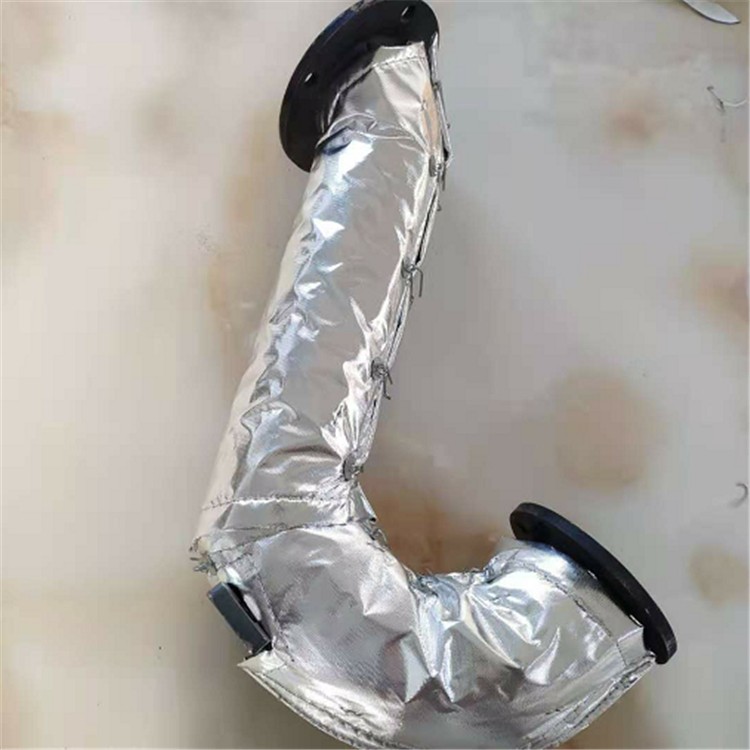It’s a common question in the automotive world: “Is an exhaust heat blanket a necessary upgrade, or just a race-inspired accessory?” The truth is, there’s no one-size-fits-all answer. For some drivers, it’s a critical performance mod; for others, it’s an unnecessary expense. The real question is: what are you trying to achieve with your vehicle?

Let’s explore the real-world benefits and see which category you fall into.
What Does an Exhaust Heat Blanket Actually Do?
In short, it contains intense exhaust heat within the headers or turbo, preventing it from radiating into the engine bay. This leads to three primary benefits:
Reduced Under-Hood Temperatures (IAT): Cooler air entering the engine is denser, allowing for more efficient combustion.
Enhanced Performance: Lower IATs directly translate to more consistent horsepower and torque, especially in demanding conditions.
Component Protection: Shields sensitive wiring, hoses, and other engine bay components from heat degradation.
Now, let’s see how these benefits apply to different types of vehicles and drivers.
Your Vehicle: Standard sedan, hatchback, SUV used for school runs, groceries, and commuting.
Your Goal: Reliability, fuel economy, and low maintenance.
The Verdict: For a stock engine operating under normal conditions, an exhaust heat blanket is likely not a necessity. Modern cars are engineered to manage under-hood heat effectively for daily use. You won’t see a noticeable difference in fuel economy or driving feel.
The Exception: If you live in an extremely hot climate, frequently sit in heavy traffic, or notice heat-related issues (like premature component wear), a heat blanket can be a worthwhile investment for long-term reliability and protection.
Your Vehicle: Sports cars, tuned sedans, dedicated track cars.
Your Goal: Maximizing horsepower, ensuring consistency over multiple laps, and protecting critical systems.
The Verdict: This is where a heat blanket shifts from an option to essential equipment. On a racetrack, where the engine is under constant high load, managing heat is paramount. By containing exhaust heat, you prevent the intake from sucking in hot air, which causes power loss (heat soak). This ensures your car performs at its peak on lap 1 and lap 10. It also significantly reduces the risk of heat-related failures, like vapor lock in fuel lines.
Your Vehicle: 4x4s, Jeeps, Land Cruisers, and other modified off-road trucks.
Your Goal: Torque, reliability in remote areas, and conquering tough terrain.
The Verdict: Off-roading is often a game of inches and low-RPM crawling. This can generate massive amounts of heat without the airflow of highway speeds. A heat blanket protects vital components when navigating through mud, water, or tall grass that can trap heat. More importantly, by keeping under-hood temperatures down, you maintain engine efficiency and prevent power loss when you need torque the most to climb that next obstacle. For anyone venturing far from help, this reliability upgrade is cheap insurance.
Your Vehicle: Any vehicle with a turbocharger.
Your Goal: Faster spool time, sustained boost, and turbo longevity.
The Verdict: Turbochargers get extremely hot. Wrapping the turbo housing and nearby downpipe keeps that heat contained. This does two critical things: First, it helps the turbo spool faster by keeping exhaust energy high. Second, it drastically reduces the heat transferred to the intake charge air (especially important for intercoolers) and the engine oil, which is crucial for preventing turbocharger cook-down and extending its life.
Your Vehicle: Older cars with less advanced cooling systems and heat-resistant materials.
Your Goal: Preserving a cherished vehicle and ensuring its longevity.
The Verdict: Older wiring looms and rubber hoses are particularly vulnerable to heat. An exhaust heat blanket is an excellent, low-cost way to protect these aging components from the intense radiation of exhaust manifolds, preventing brittle wires and cracked hoses. It’s a simple upgrade that adds a layer of modern protection to your classic beauty.
So, Do YOU Really Need One?
The answer is clear when you align the product’s benefits with your specific use case.
If you're a daily driver, it's a "nice-to-have" for extreme conditions, but not a must.
If you're into performance, off-roading, own a turbo car, or a classic vehicle, the answer is a resounding yes—it's a cost-effective upgrade that delivers tangible benefits in performance, protection, and peace of mind.